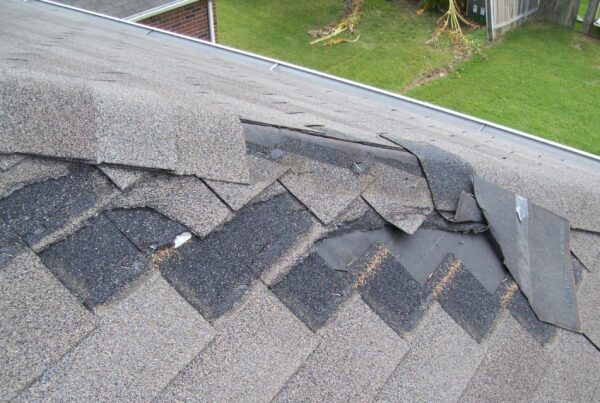A recent article in the New York Times (October 2, 2011 by Allison Arieff) caught my attention because the back bone of Long Island, NY (home to NABIE headquarters) has long been rooted in a suburbia. So when I saw the title of the Times column (which now is the title of this article), I had to read it.
The writer, who covers design and architecture issues for the Times, faults American housing for lacking in real innovation, especially when compared to other segments of our economy such as communications and media. She cites that typical home construction in the United States has not changed appreciably in a century, is unnecessarily protracted in completion, and generates 50% of the waste produced in the country.
A fundamental premise underlying her discussion is that the home building industry resists innovation, perhaps in part because it may involve some undue risk taking that builders find uncomfortable. Coupled with that premise is the continued expectation on the part of the industry that the economy will turn around in the near future and all will be well once more. She takes builders to task for ignoring the economic realities of a huge surplus of homes on the market, many foreclosures, and declining prices.
The author compliments some innovative builders, but takes them to task for focusing on niches that do little to address anything but the high end of the market. Ideally, the kind of effort expended by niche builders focusing on one half of one percent of the five percent of architect designed homes in America might be better served with an emphasis on the typical homes found in suburbia.
She quotes architect Aron Chang (who apparently enjoys some notoriety for intellectually rigorous and thoughtful pieces written about suburbia) who says,
“But right now we have an opportunity to rethink suburban housing: to make it responsive not to dated demographics and wishful economics but rather to the actual needs of a diversifying and dynamic population — not only to the so-called traditional households but also to the growing ranks of those who prefer to rent rather than buy, who either can’t afford or don’t want a 2,000-square-foot-plus detached house, who are retired and living on fixed incomes and maybe driving less, who want granny or nanny flats, who want to pay less for utilities and reduce their carbon footprint, and so on.”
Chang has also further stated that the,
“…disconnection between the rising diversity of housing needs and the monotony of housing production speaks to the tenacity of the postwar American dream — the enduring allure of the detached house with front lawn and backyard patio — as well as to the profitability of catering to these aspirations.”
Certainly the Times article underscores concerns about the economy and suggests that some of the very problems taking place now might be leveraged for innovation. As building inspection engineers, how can we be part of that?
With 30 years in the building inspection engineering industry (about 2/3 of that my full time engagement), I only occasionally interacted with architects on a professional level. Eastern Long Island and New York City (the two primary markets on which I focused) have a high percentage of custom designed (as opposed to speculatively built) structures and usually my relationship with architects focused on specific engineering assignments rather than inspection services.
But it occurs to me that in the thousands of homes and buildings I inspected, my input in finding problems post occupancy could have been enormously useful to both builders and designers alike. That feedback loop to the original building creators could prove enormously useful in avoiding future problems or mistakes. However, such a feedback loop rarely – if ever – exists.
In fact, one of the most prominent opportunities I had to engage in such feedback happened only a few years ago when the architect for a new home realized many deficiencies in the finished product might cause him to be sued. I was retained to evaluate all of the construction against his design, and to also critique certain design elements. It was a rare opportunity to bring the expertise of a building inspection engineer to bear on a completed design with an eye toward problem mitigation, and the architect was my client.
Perhaps an area to explore in our practices is offering a kind of peer review service to building designers and builders to help them gauge the “buildability” of their creations. Many NABIE members have been in hundreds if not thousands of buildings and have countless anecdotes about all kinds of building problems and failures. An understanding what contributed to those issues is rarely afforded to the original designer or builder. While those people may long be out of the picture, knowing what worked and what failed is invaluable knowledge we all have. Conveying such knowledge on a project by project peer review basis to other engineers, architects, and builders may truly be the way to begin innovating in the way the Times article suggests.
I find it interesting that in the last four years one of the local architects in my area has called and emailed me more than in all the years I have known him. His design practice is clearly “off” with the economic downturn, but he is spending time considering various design concepts (most involved with structure) on which he wants input. Keep in mind this is not “consulting” it is collegial discussion between two licensed design professionals. Perhaps if his practice again flourishes he’ll recall those exchanges, use some of the ideas we discussed, or even engage me to critique a design prior to construction.
The innovation inherent in a building inspection engineering career spent gauging and witnessing what did and didn’t work is invaluable. My architect colleague has gone so far as to invite me to local AIA chapter meetings. While I have yet to accept his invitation, offering expertise to those often entrusted with design and construction may only help them more to deliver a better, more innovative product. And it may open a new market for our services.
*This article had been posted in the Fall 2011 edition of The Examiner.


